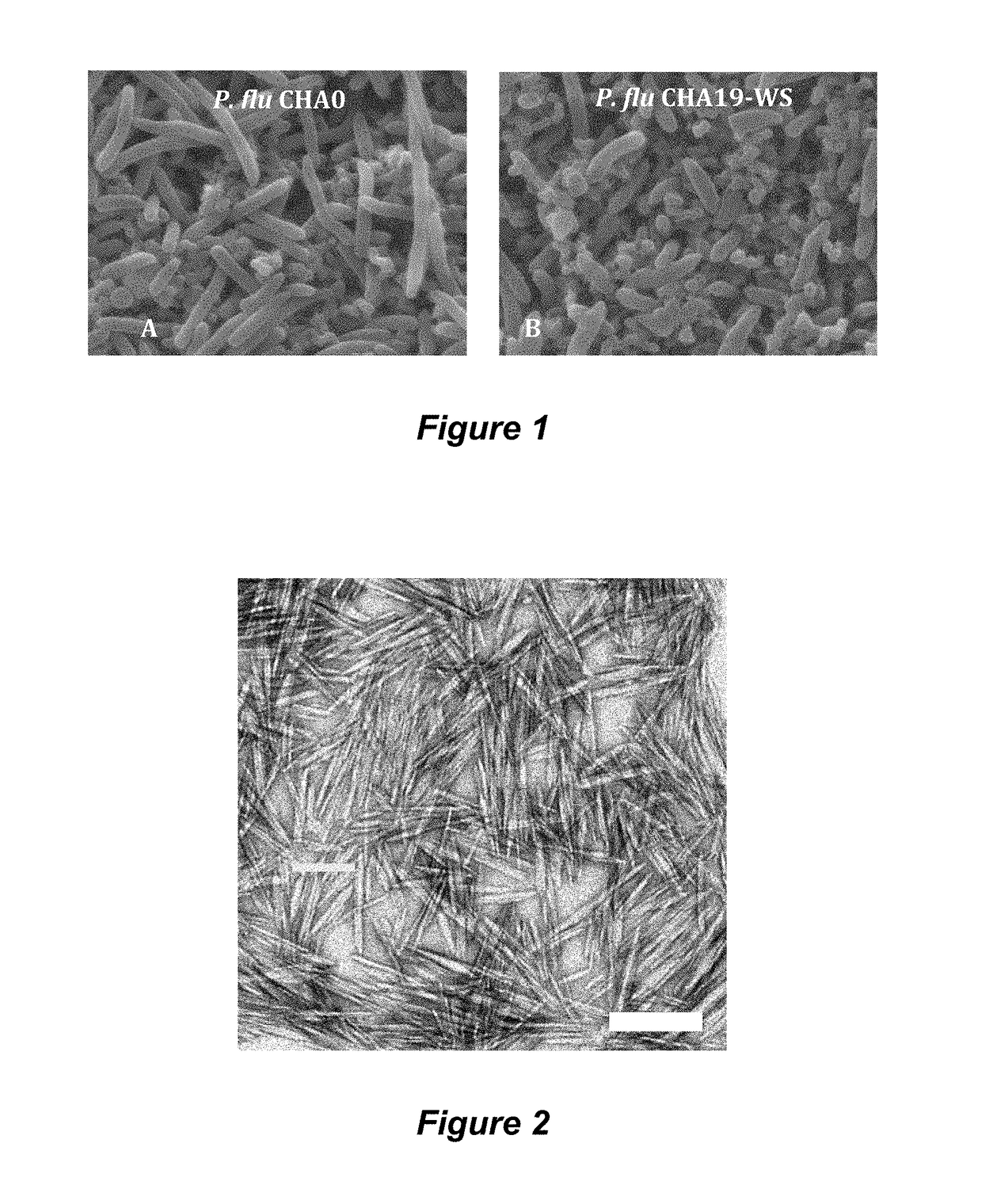Nanocrystalline cellulose hydrogels for inhibition of bacterial adhesion
a technology of nanocrystalline cellulose and bacterial adhesion, which is applied in the direction of coatings, catheters, etc., can solve the problems of reducing the preference growth of antibiotic-resistant bacteria, unable to stop the formation of biofilms by antibiotic agents, and notoriously difficult to treat biofilm infections. , to achieve the effect of reducing the frequency or severity of infections
- Summary
- Abstract
- Description
- Claims
- Application Information
AI Technical Summary
Benefits of technology
Problems solved by technology
Method used
Image
Examples
example 3
ompounds Improve CNC-Induced Aggregation and Reduce Bacterial Adhesion
[0156]It was surprisingly discovered that certain organic compounds can be added to a CNC composition to increase the ability of CNC to aggregate bacteria and reduce or prevent biofilm formation. While humic acid and monosaccharides alone promoted only a minor amount of aggregation of bacterial cells, it was found that humic acid and monosaccharides such as glucose (e.g., at about 1 mg / mL) significantly improve bacterial aggregation in the presence of CNCs. As shown in FIG. 11, the addition of humic acid or glucose significantly increases the aggregation of bacteria by at least three-fold, typically 10-20 fold. Humic acid used was IHSS Suwannee River Humic Acid Standard II 2S101H, but a variety of humic acids can be effective. Also, the presence of organic additives with CNC reduces bacterial adhesion under both static and hydrodynamic flow conditions, as shown in FIG. 12. Thus, these organic additives can be used...
example 4
gels Reduce Bacterial Adhesion
[0157]The presence of a CNC hydrogel on the surface of a catheter significantly reduces biofilm formation. Biofilm formation on catheters was reduced by 2-log units when the catheters were coated with a CNC hydrogel, as shown in FIG. 13. This biofilm reduction can be further increase by the addition of humic acid or monosaccharides, as described above. The experimental conditions for obtaining the data of FIG. 13 are as follows.[0158]Flow rate=0.5 mL / min continuous flow;[0159]1×106-1×107 CFU / mL P. aeruginosa PAO1 in synthetic urine solution;[0160]For sampling, 3 cm of catheters was cut off and immersed in 2 mL 1% PBS buffer, followed by 10 minutes of sonication. Thereafter, heterotrophic plate counting was conducted to determine the cell density (cells / mL) in the buffer.
[0161]In terms of the aggregation effects, extracted bacterial EPS, glucose, and humic acids significantly promoted bacterial aggregation. The impact from alginate on the bacterial aggre...
PUM
| Property | Measurement | Unit |
|---|---|---|
| ionic strength | aaaaa | aaaaa |
| ionic strength | aaaaa | aaaaa |
| concentration | aaaaa | aaaaa |
Abstract
Description
Claims
Application Information
 Login to View More
Login to View More - R&D
- Intellectual Property
- Life Sciences
- Materials
- Tech Scout
- Unparalleled Data Quality
- Higher Quality Content
- 60% Fewer Hallucinations
Browse by: Latest US Patents, China's latest patents, Technical Efficacy Thesaurus, Application Domain, Technology Topic, Popular Technical Reports.
© 2025 PatSnap. All rights reserved.Legal|Privacy policy|Modern Slavery Act Transparency Statement|Sitemap|About US| Contact US: help@patsnap.com



